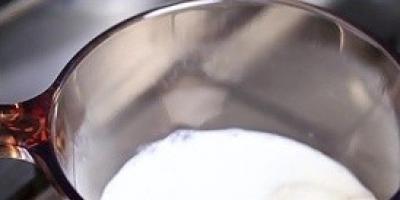The main factors due to which tile paving has become so popular are the transparency of the laying technology and the ease of repairing the coating if necessary. In this case, heavy construction equipment, trucks and a large number of workers will not be required to arrange a garden or pedestrian path. You can do the landscaping of your backyard yourself, but if the amount of work is large, it will be enough to invite 1-2 friends.
The only reason that makes you think about this method of paving with negative point point of view - the high cost of material in retail chains. However there is affordable option significant cost reduction. Tiles can be made at home and then their cost will be significantly lower. Therefore, this article will discuss the question of how to do paving slabs at home.
Factory technology
Vibro-cast, vibro-pressed and clinker tiles for paving sidewalks are produced on an industrial scale. At the same time, depending on the manufacturing technology, the quality of products varies greatly.
The technology is quite easy to use. It is built on the fact that a cement-based solution is poured into shaped molds and compacted on a special surface by exposure to vibration.
Vibropress.
Such products are rich in color shades and are sold at a low price. However, the strength and frost resistance of such paving slabs is an order of magnitude lower than that of other types.
Vibropressed tiles made using special equipment that compacts the concrete mixture high pressure. Such paving stones are stronger, but also more expensive due to the use of a press and increased energy consumption.
The most best tiles- clinker. Clinker production of paving slabs occurs by firing specially prepared clay in a kiln at very high temperatures. high temperature. The final product is very durable, frost-resistant and beautiful, while not inferior in durability even to hard natural stone.
But the high energy consumption for the production of paving slabs and the need to use expensive industrial equipment raises the cost of this material several times.
Equipment and supplies for work
In homestead farming conditions, special industrial equipment, of course, is absent, and therefore the technology for making paving slabs at home is based on vibration compaction of concrete. To complete the work you will need the following equipment and supplies:
- small;
- wide container for receiving ready-made concrete;
- sieve for sifting sand;
- or other flat vibrating surface;
- forms for pouring concrete mixture;
- rubber hammer;
- shovels, buckets, spatulas.
In addition, you need a strong, stable rack for drying tile blanks in molds.
Necessary materials
From building materials you will need:
- cement grade PC500 or PC400;
- washed or river sand, preferably medium fraction;
- gravel fraction no more than 10 mm;
- natural or mineral pigment;
- lubricant for molds.
If the gravel is dirty or contains a lot of dust, it must be washed, since impurities can adversely affect the quality of the products and their color shade.
Organization of the work site
First of all, it is necessary to correctly install the concrete mixer, vibrating table and rack for placing forms with concrete. These are the largest objects and all actions will take place near them.
A concrete mixer, as the main equipment for the production of paving slabs, should be positioned so that there is enough space to place a pile of sand and gravel near it.
You should also leave room for buckets of water or a watering hose. The best place for the vibrating table is located in a straight line between the concrete mixer and the rack for storing forms with concrete.
The rack can be placed indoors or outdoors, but in a place where it will be reliably protected from direct sun rays. Cement can be stored near the rack.
Molds for production
Manufacturers offer forms of various configurations and sizes, made from different materials. You can buy standard square or rectangular, composed of several elements or monoblock shapes. These can be cups for making each product separately and for simultaneous pouring of several slabs.
If desired, molding equipment will not be difficult. In this case, you can get exclusive products that no one else has. For this purpose, various materials are used - from wood and polystyrene to metal and gypsum.
It is important to remember that tiles made by vibration casting have a reduced strength and frost resistance. That's why important factor When choosing forms, their depth determines the thickness of the future product.
When homemade its thickness must be at least 40 mm for pedestrian paths and sidewalks and at least 60 mm for travel or parking areas passenger car. The movement of freight transport on such tiles is extremely undesirable.
1 of 3



Manufacturing instructions
The production of paving slabs by vibration casting is carried out in several stages, which include:
- preparation of concrete mixture;
- preparing forms before laying concrete;
- pouring concrete mixture into molds and operating the vibrating table;
- concrete hardening period;
- unmolding and storing finished paving stones.
Each stage has its own technological features, some of which may have several options.
Requirements for concrete mixture
There are certain requirements for materials for making concrete. The sand must be sifted through a sieve to remove particles of clay, earth and other unwanted impurities that reduce the quality of concrete. The gravel must be clean. Otherwise, it must be washed with water. The use of PC300 cement is unacceptable even when added in increased proportions.
In order to increase the strength of the tiles, synthetic fibers (fiber fiber) can be added to the concrete composition. Expensive industrial plasticizers can be replaced with liquid detergent. The pigment dyes used must be resistant to ultraviolet radiation and intended for outdoor use.
 Fiber fiber.
Fiber fiber. According to experts, the ideal ratio of mixture components for making tiles is:
- cement PC500 – 21% or 30 kg;
- gravel or granite screenings - 23% or 32 kg;
- sifted sand - 56% or 75 kg;
- pigment dye - no more than 7% of the mass of concrete or 700 g;
- industrial plasticizer C-3 – 0.7% by weight of the mixture or 50 g;
- water – 5.5% by weight of concrete or 8 liters;
- fiber fiber up to 0.05% by weight of concrete or 60 g.
Since it is almost impossible to maintain such exact proportions at home, the solution is usually prepared based on the following calculation:
- 1 part PC500 cement, 1.5 parts gravel, 3 parts sand;
- 1 part PC400 cement, 1 part gravel, 2.5 parts sand.
Liquid is added as a plasticizer detergent at the rate of 1 glass per batch. Water is added gradually until the mixture becomes homogeneous and the density resembles thick sour cream.
If dry pigment dye is used in the work, it must first be dissolved in water and then added to the concrete in an amount of no more than 1.2 liters per batch.
Initially, dry components are poured into the mixing equipment for the production of paving stones, and after mixing them, water is gradually added. In this case, it is recommended to first fill in half of the required sand and gravel, and then pour out the cement, mix and add the rest. In this case, the cement will not stick to the walls of the mixer.
 Solution mixing mode.
Solution mixing mode. Mixing the concrete mixture with added water should not be less than 15 minutes. The finished batch is poured into a trough or other similar container, and from there it is transported or loaded directly into molds.
 Lubrication of molds.
Lubrication of molds. Placing ready-mixed concrete into molds
The types of forms and their possible choice or making with your own hands were discussed above. Therefore, the process of filling them and compacting them on a vibrating table will be described here.
In order to make the finished tiles easier to remove after the mold has hardened, it is necessary to carry out pre-treatment. To do this, they are lubricated from the inside with light machine or vegetable oil. IN as a last resort It is allowed to use a thick soap solution.
If you have financial means, you can purchase a special lubricant composition in stores. It will provide easier unmolding, but will require additional costs.
1 of 12












For quick filling forms, it is recommended to install a low table near the vibrating table. It will be possible to place forms on it and fill it there. This will reduce the amount cement mortar spilled onto the working vibrating surface.
The filling process can be done in three ways:
- The concrete mixture, pre-painted throughout the entire volume, is poured into molds in one go, the surface is leveled with a spatula and placed on a vibrating table.
- Initially, a colored solution is poured into a quarter of the volume, and the rest of the volume is filled with ordinary gray concrete.
- The colored layer occupies approximately 15-20% of the volume, and a reinforcing mesh or pieces of wire are placed between the colored and gray layers to increase the strength of the products and better connect the layers.
The first option will be technologically the simplest, but concrete mixture with a large amount of dye may have reduced strength.

In the second case, pure concrete will play the role solid foundation, resulting in stronger tiles. In addition, the cost of purchasing dye is reduced. However, you will have to simultaneously prepare two different solutions - colored and gray, which complicates the production technology.
The third option allows you to get the strongest and beautiful tiles, but it is even more difficult to implement. Ultimately, the choice of technology in this case depends only on you.
Methods for painting tiles
To obtain colored shades on the surface of paving slabs, four different methods are used:
- The tiles are made of colored concrete throughout the entire volume;
- Products are made in two layers, where upper layer the tiles are made of colored mortar, and the rest of the mass is made of ordinary gray concrete mixture;
- Before pouring concrete into molds, their inner surface is coated with a water-based paint;
- Superficial.
The most stable color in the manufacture of paving slabs can be obtained by using the first two methods, but they are quite expensive from a financial point of view. The fourth option allows you to save money, but the paint on the surface will be easily erased, as a result of which it will have to be repainted periodically.
 Forms filled with concrete mixture on a vibrating table.
Forms filled with concrete mixture on a vibrating table. Placing filled forms on a vibrating platform
After required amount forms will be filled, they are placed on the surface of the vibrating table. In this case, it is allowed to place the forms one on top of the other, but not more than in 2 rows.
Vibration treatment of paving slabs allows you to displace all the air and efficiently compact the concrete mixture. If during the vibration process there is a strong subsidence of the solution, then you need to add it to the bowls that are not completely filled and level the surface with a spatula.
The strength and frost resistance of products, and, therefore, their durability, directly depend on the quality of compaction of the concrete mixture. Therefore, the vibration treatment process must continue for the required time. The exact duration depends on the oscillation frequency and engine power and is determined experimentally (on average it is 40-120 seconds).
 Homemade vibrating table.
Homemade vibrating table. Concrete hardening process
After processing on the vibrating table, the completed forms must be transferred to a storage rack. The shelves of the rack must be able to withstand a large weight load, and the rack itself must be in the shade, excluding direct sunlight from hitting the surface.
The process of initial setting of concrete during the manufacture of paving slabs occurs in 12-18 hours, but complete hardening will end only after 72-96 hours, depending on the temperature and humidity. Only after this can you begin to remove products from the molds and store them.
Unmolding and further storage of finished products
 Unmolding.
Unmolding. The process of removing finished products from molds after concrete has hardened is called demolding. It must be done carefully, taking care not to damage the slabs and to preserve the possibility of reusing the molds.
If the internal surfaces of the molds have been treated before pouring the concrete, then unmolding will not be so difficult, especially if soft models are used.
If complications arise, we can recommend treating the outside of the molds with hot water. Plastic or silicone materials will expand from the hot water and release the tiles. During unmolding, it is allowed to tap the molds and tiles with a rubber mallet.
The removed tiles are stored on pallets, observing the dressing between the individual products when laying. The height of the stack on a pallet should not exceed 1.2 meters. This condition allows you to protect the tiles of the lower rows from destruction due to weight load.
Conclusion
As you can see, it is quite possible to make paving slabs with your own hands, since this technological process is not very complicated and does not require special knowledge from the performer.
 Cost of making tiles yourself.
Cost of making tiles yourself. True, for successful work you need to have equipment for the production of paving slabs such as a concrete mixer and a vibrating table, but you can buy them, rent them or make them yourself. The most important thing to obtain a high-quality result is strict adherence to technology and the use of high-quality raw materials.
- 1
Making paving slabs with your own hands - 2
- 3
Paving slabs are aesthetically pleasing and resistant to a variety of external factors material. However, its cost is also significant, so many owners country houses wondering how to make paving slabs with your own hands.
Help in making paving slabs by hand step-by-step instruction.
. We purchase the necessary materials
To make paving slabs with your own hands you need cement And sand. Additional components are dyes and superplasticizer. The latter is needed to increase the strength characteristics of products and their resistance to frost.

paving slabs by hand step by step instructions. Photo


. We select equipment
Equipment for the production of paving slabs with your own hands requires a vibrating table and molds. Vibrating table - special device, creating small vibrations. Thanks to this, the mixture is compacted and the tile acquires the necessary strength. Buying such a device for home use is not profitable. If there are no rental options, then you can use available options. For example, an old one will do washing machine, which remains in working condition if it vibrates strongly enough in any mode.
The following necessary equipment are forms. Next there will be information on how to make molds for paving slabs with your own hands, but in some cases it is more convenient to use ready-made ones.

how to make paving slabs with your own hands. Photo
Ready-made molds come in rubber, plastic and polyurethane. Most durable rubber. They can withstand five hundred castings. Least durable polyurethane. They can survive only one hundred castings. In the middle plastic- two hundred and fifty castings. Rubber and plastic molds are more expensive than polyurethane ones.
. Production technology
Prepared for filling out forms mixture. The number of components will be as follows. For five kilograms of cement, take twice as much clean fine sand and thirty grams superplasticizer. Dye is added as desired.

DIY paving slabs at home. Photo
All ingredients are thoroughly mixed first in dry form. Then water is added, which is poured in small portions. The result should be a homogeneous and fairly viscous mixture. There shouldn't be too much water. The liquid solution produces insufficiently strong products.

In addition to the main components, fine gravel or screenings can be added to the solution. It will make the paving stones more durable and give it a natural appearance. In this case, the ratio of components changes slightly. Take thirty grams of superplasticizer and two parts each of cement, sand and gravel.

Before pouring the solution, the mold is lubricated with a special emulsion. There are many types of them. However, you can use a simpler option - dishwashing detergent. This liquid is applied with a brush to the entire inner surface forms.

making paving slabs with your own hands. Photo
After processing all the forms, it is poured into them. solution. To do this, fill the containers halfway and place them on vibrating table or a device that replaces it. The vibration is turned on and then the forms are filled to the brim.

After some time, the forms are transferred indoors and covered. film to prevent the concrete from drying out too quickly. After about two days, the hand-made paving slabs are removed from the mold.
For quick removal, the mold with the tiles is lowered into hot water(80 degrees). The mold expands and the tiles are easy to remove.


The finished tiles are placed on a pallet or tray made of boards and covered with film. First ones are better ten days of it withstand V utility room, i.e. under the roof. After this, she is taken outside and left for another month so that she gains strength.


Paving slabs with river pebbles
There are many options for paving slabs. Additional components are often added to the main solution, for example, river pebbles or other stones. Let's look at how to make paving slabs by hand in step-by-step instructions.

Making paving slabs with your own hands begins with preparation solution. To do this, take a plastic basin or other container, as well as measuring containers. Pour one part cement and three parts sand into a basin.

Pour water into the mixture, stirring continuously. The consistency of the finished solution should be dough-like.


To make interesting paving slabs with your own hands, you should prepare not only the mortar, but also the stones. Select pebbles of interesting shapes and colors.

To make tiles you need form. It can be made in the form of wooden formwork. If tiles are required different sizes, then you can additionally take flat polyethylene containers.

DIY molds for paving slabs. Photo


It is more convenient to perform the molding process on a plank platform covered with polyethylene. The formwork is placed on the platform. The bottom is coated with used machine oil so that the concrete does not stick to the film.

Concrete mortar post with a trowel and spread over the entire area. It should be spread gradually, smoothing the composition and compacting it.



After creating an even cement layer, lay out on its surface pebbles. The layout is carried out taking into account the color and size of the stones so that the entire area is filled.



After laying, the stones are pressed into the mortar with a trowel. This process will require the use of force. At the same time, similar procedures are performed in small molds. The molds with tiles are covered with polyethylene and kept for three or four days. If the weather is hot, then additionally water them in the morning and evening. The formwork should be removed when the tiles begin to move away from the walls.

The resulting paving slabs are laid in various combinations. The result is consistently impressive.




DIY molds for paving slabs
Many people would like to make their own paving slabs for suburban area. However, they are frightened by many points, and in particular, the high cost of forms. Let's look at how to make molds for paving slabs with your own hands.
. Plastic construction
Plastic is one of the most comfortable materials for making molds. It adheres well to the edges of the tiles and is quite durable. If you make these forms for paving slabs with your own hands, they will be a relatively inexpensive option. Naturally, a homemade form will not create an ornament on the surface of the tile.

For production you will need wooden mold with carefully adjusted details and plastic(can be secondary). The form is set as level as possible using a level.
When everything is prepared, pour in the plastic. It sets in about an hour. After this, the product is removed, and the roughness is smoothed out. Ready plastic mold dry for another two or three days.
Homemade plastic molds for paving slabs are made from any plastic containers. Most importantly, they should not crack when compressed.
Another way is to cut up unnecessary PVC pipes onto rings of the required height. They make excellent shapes for round tiles.

. Wooden mold(formwork)
The wooden mold is one of the simplest and most inexpensive, and can be easily made. To create this mold for paving slabs with your own hands, take several pieces wooden blocks. The desired shape is formed from them, its angles are adjusted with a special tool. Temporary connection is made with adhesive tape.

When everything is prepared, the bars are connected screws. For quadrangular formwork, eight screws are enough for secure fastening.
Ready frame sanded. To extend its service life and make it easier to remove tiles, the surface can be coated varnish.

The wooden frame can be easily disassembled to remove the tiles. This will avoid damage and cracks.
. Iron form
The iron version of the form is one of the most durable and relatively simple to manufacture. You can create such homemade forms for paving slabs from leftover reinforcement or other similar materials. Slats are selected and cut into the required number of pieces of a certain size. Next, the corners are aligned and all parts are welded together. For ease of use, the handles are welded.

. Polyurethane mold
Polyurethane is one of the types of polymer masses. Forms made from it are best suited for the production of paving slabs, as they are characterized by a combination of strength and flexibility.
When creating such a form for paving slabs with your own hands, you should definitely take into account security measures. You must work with gloves. If processes take place indoors, good ventilation is required. The container with polyurethane must be tightly closed. Immediately before pouring the polymer, it is necessary to wear a rubberized apron in addition to gloves.

To create a polyurethane mold, first prepare matrix. This is a product that should look like future tiles. First, a master model is prepared, i.e. a sample made from any material. Starting with clay and ending with plasticine. You can use ready-made tiles as a basis.
The sample is washed and dried, and then applied to it adhesive compounds. It is better to take wax-based options. This composition must be used to treat all surfaces with which the polyurethane will come into contact when pouring. The adhesive composition dries in about twenty minutes.

Manufacture formwork, into which the sample will be placed. She should be three centimeters taller than him.
The polymer mixture is made in compliance with clear proportions. The prepolymer and hardener are heated to room temperature, and then mixed in equal parts. The finished composition should be homogeneous, without air bubbles.
The composition is applied to the surface of the stone with a brush, and only then it is filled completely. The matrix is ready. The next stage is creating the mold itself.

Next, making a mold for paving slabs with your own hands is done in a day. The matrix is placed on flat surface and gradually it is filled two-component polyurethane, lifting one of the edges of the matrix. The mixture will spread on its own. The finished forms are removed after a day and left to dry for another two days.
. Silicone molds
The silicone version is highly plastic. This is convenient for removing tiles, but if the mold is positioned incorrectly, the product may be warped.
Make this form for paving slabs with your own hands from three-component silicone mixture. You will need a base, catalyst and hardener. They are mixed in specific proportions.

Prepare the container in which the mold will be created and degrease it. At the bottom you can lay out a pattern with sculptural plasticine. The entire surface of the mold is lubricated with a thin layer vegetable oil. After this, pour in the silicone mass in a thin stream, trying to avoid air bubbles. The form is completely ready for use within a day.
Having decided to arrange paths on the territory of the dacha, there is a desire to create convenient landscape elements that are attractive and useful. Can be used various material– wood, natural stone, crushed stone. Sidewalk tiles are in demand. Homemade tiles will harmoniously complement the appearance, successfully combining with general style yard It remains to figure out how to make it.
Advantages of homemade tiles
Process self-made tiles is quite difficult and long, but very interesting. The result of the working cycle will be beautiful products that look great when laid. It should be added that producing tiles for finishing paths yourself will allow you to save a lot of money. cash without overpaying for ready material. Possibly tile material self-made does not really meet the requirements for load-bearing capacity; it is not recommended for areas under loads or equipment, but for simple paths it is quite suitable. And if the concrete mixture is prepared in compliance with all technological features and proportions of raw materials, the finished product will serve for a long time.

Using successful colors and coloring compositions, it is possible to produce tiles in a variety of colors.
What is needed for production, video
The tiles are made from cement raw materials, to which sand and water are added in the required proportions, depending on the quality of the cement. It is recommended to use cement M 500. The sand mass and water must be filtered and sifted; the presence of small pebbles that do not affect the parameters of the concrete mixture is allowed.

Plastic forms necessary for production can be purchased in special stores. They are various forms and sizes, each can withstand two hundred pours. To avoid delaying the production process, it is recommended to have a dozen molds of each type. Some people use plastic food containers instead of molds, which have suitable parameters for flexibility and strength. With their help, you can cast simple equilateral shapes in the form of bricks.
The tools you will need are a container for mixing concrete, a shovel, buckets, and a trowel.
Preparing the solution
Having prepared everything necessary, we proceed to production activities. Mixing sand and cement can be done manually or with a hammer drill equipped with a mixing attachment. If you plan to make a large number of tiles, you should think about a concrete mixer.

A portion of cement and three portions of sand are poured into the mixing container. Water should be added gradually, constantly stirring the raw material. Remember that excess moisture can degrade the quality of concrete. To prevent this negative phenomenon, water-repellent additives and fiber should be added to the solution for better reinforcement. The consistency of the mixture should resemble liquid dough that does not roll off the trowel. If you want the tiles to be of different colors, add coloring pigments. After adding them and actively stirring, the solution becomes uniform in color after about seven minutes.
Fill the solution

Forms should be lubricated with emulsion or used machine oil to make removal easier finished goods. The solution is poured into molds and compacted with a trowel. To increase the strength of the tiles, you can put a metal mesh, wire or rods in the molds. To compact concrete and squeeze air out of it, a vibration effect should be created using a vibrating table.

If there is no such design, use a rack or shelf, tapping it with a mallet.
Drying and removing tiles

Forms filled with concrete mass are covered with polyethylene and kept in this condition for several days. It is important to maintain the required humidity by periodically wetting the products with water. Drying is carried out in a place inaccessible to open sun. Unmolding is done by lightly moving the sides of the molds and shaking. You will have to dry the tiles in the shade, letting them sit for about a month. During this period, the material will gain the necessary strength and become suitable for use.

In any case, having made such beauty with your own hands, you can be sure that your life has not been lived in vain!
- Homemade tiles from Kostya9
- Homemade vibrating table and homemade tiles from Commander
Homemade tiles from Kostya9
Kostya9 Member of FORUMHOUSE
To implement the idea, we studied specialized network resources on the topic of forms and the portal forum, on the topic of the process itself - necessary equipment, raw material base, production technology. As it turned out, plastic and other forms are available, whatever you want, the main materials were left over from the construction site, and the existing units require relatively simple, feasible finishing. Unforeseen complications arose only with the purchase of five hundred cement - due to low demand, local traders simply did not have it, so they had to go to a neighboring town.
Manufacturing
To make the tiles as durable as possible, they were converted into a vibrating table a circular saw – working surface replaced by a heavy plate (with springs from nine racks), under the plate there is a vibration motor. Typical concrete mixer for preparing mortar, ready-made polymer forms, with imitation of sandstone surface, for drying - old refrigerator, placed sideways.
The concrete proportions were also selected on the forum.

In addition to the available screenings, washed river sand and purchased cement of the required brand, a plasticizer was required for the tiles, and the choice fell on SP-1. This is a universal additive that improves the characteristics of the solution; its use increases the mechanical strength of concrete, reduces the number of pores on the surface, imparts smoothness and increases the efficiency of vibration. Although I dreamed of colored tiles, the cost of the dye and white cement, to obtain a rich color, they were forced to make do with a natural, gray tint.
The mixing proportions were as follows:
- Screenings (crushed stone fractions 0-5) – 38 kg (three ten-liter buckets);
- Sand (river, washed) – 18 kg (one ten-liter bucket);
- Cement (M-500) – 17 kg (fourteen liter bucket);
- Plasticizer – 80 grams per batch (diluted in a liter warm water);
- Water – 8.5 liters (if the weather is hot, another 0.7 liters).

Mixing technology:
- The first thing to put into the concrete mixer is the screenings (all of them);
- Water pours in;
- A plasticizer is added;
- The mixture is thoroughly mixed;
- Cement is added;
- Mix thoroughly again;
- Sand is added;
- Final mixing (add water if necessary).
The consistency of the solution is quite thick, reminiscent of wet earth - this is a conscious choice, although many prefer to work with more fluid solutions.
Kostya9
Liquid concrete is like liquid mud– no strength.
Forms pre-lubricated with motor oil (in the corners, with a brush) are placed on a vibrating table. Filling with the solution should be uniform.






Processing time is from three to seven minutes. The vibration should not only compact the mixture, but also expel air bubbles from it. During the processing process, the forms are swapped and rotated around their axis so that the impact is uniform. As the solution shrinks, the solution is added until the form is filled to the end; you can slam it down with your hand to ensure that there are no voids left. From the vibrating table, the forms are sent to the dryer for more than a day (25-30 hours). On the advice of the thread participants, an old refrigerator, aka drying chamber, was turned from the side to the “back”, this significantly simplified the process of inserting and removing the product.



After this period, the finished tile easily comes out of the mold due to lubrication and due to ongoing hydration processes that keep the raw material hot. If you leave the tile too long and it cools down, it will be more difficult to get it out of the plastic - you will have to pour boiling water on it so that the plastic expands. However, if you leave it not for a couple of hours, but for a couple of days, and it has time to completely cool down, it will be difficult to remove it, even using boiling water.

Having worked his hand on square tiles, the craftsman moved on to figured ones and decided to use chromium oxide as a dye.


The first test of adding dye at the rate of 1% of the binder (170 grams per batch) yielded virtually no results. It was not color that appeared, but a light, almost imperceptible tint, so the dosage was doubled, which gave the desired greenery. Like the plasticizer, the dye was pre-diluted in water.

Homemade tiles from Commander

Commander FORUMHOUSE Member
I covered both the barn and the yard with tiles of my own making, as well as the paths to the greenhouses. Very good and profitable!
And in this case, a homemade vibrating table was used. Here's the "recipe" for anyone interested:
- Motor - from washing machine(on rubber shock absorbers);
- From it comes a pulley for the belt drive from the engine to the eccentric;
- The eccentric is a former electric motor rotor: 1/3 is cut off with a grinder, a cage for bearings is machined, holders are welded, the entire structure is screwed to an iron sheet;
- On top of the sheet/table - wooden flooring 60x60 cm (for tiles 50x50 cm);
- High sides - so you can make tiles 6 cm thick.



For household purposes - paths to the barn, in the garage, along the edges, the Commander makes large, square tiles measuring 50x50 cm, and for decorative paths, reminiscent of sidewalks - figured. The forms, as in the first option, are polymer, soft - unlike hard plastic ones, they do not break for several years.
Composition of the solution and proportions for mixing:
- Gravel - bucket;
- Cement - bucket;
- Elimination – 3 buckets;
- Plasticizer – 2/3 cup;
- Water.
Water is poured into a running mixer, a plasticizer is added, gravel is added next, and after wetting the gravel, cement is added. When the mixture becomes homogeneous, screenings are added. The commander does not add sand, since there is a large amount of dust in the screenings, which replaces it and prevents the formation of voids. Before use, the molds are lubricated with palm oil and, when dirty, are easily washed with Karcher. But they become dirty if the technology is violated and the tiles are not kept for the prescribed day, so it is better not to rush.
Paving stones are in high demand construction material. However, a natural stone quite expensive as it is difficult to process. Therefore, natural minerals are often replaced with artificial stone based on cement binders. This material is often called simply paving slabs. You can buy it in many places, for example, paving slabs from the manufacturer /mos-bruschatka.ru have an attractive price and good quality.
Or you can make paving slabs with your own hands. It is so easy to make that almost anyone can do it, which is what some do by making tiles from artificial stone, including for sale.
To do this, you only need a room, such as a barn or garage, and a simple vibrating table. It's nice to have the luxury of a cement mixer, but a shovel and trough will do just as well. The starting raw materials are cement, sand, plasticizer, and, if necessary, dye.
The most important additive in the paving slab formulation is a plasticizer. It has the following influence on the technological process and the quality of the final product:
Eliminates cracking of tiles when drying;
Increases ductility and prevents delamination cement mixture;
Increases frost resistance and strength of finished tiles;
Gives the product some water-repellent properties.
In addition, it is sometimes possible to work with a plasticized mixture without a vibrating table.
These additives are usually available from companies specializing in the supply of raw materials for production. reinforced concrete structures. Most famous brands plasticizers for concrete - “Superpalast S-3” or Chinese brands A, B or C. But instead of industrial preparations, some detergents are quite suitable. For example, cheap liquid soap, sold in hardware stores in 5-liter canisters, crushed laundry soap, shampoo or dishwashing liquid.
One of the following substances is often used, the amount is given per 12 kg of cement (bucket):
2 tbsp. l. (with a slide) washing powder,
2 tbsp. l. liquid soap;
2 tsp. dishwashing liquid.
Works well as a plasticizer slaked lime. Its proportions are selected approximately at the rate of 1 part to 6 parts of cement, but it is preferable to select the optimal ratio experimentally. This additive protects products from cracking, makes them smooth, even, and resistant to sudden temperature changes. However, it should be noted that lime is incompatible with other types of plasticizers.

There are also semi-mystical additives, such as egg white, supposedly used by ancient builders in the construction of structures that were especially durable. Now this is not used, but no one forbids experimenting if there is such a desire.
Forms for pouring paving slabs.
They can be purchased at the store. Here is the approximate durability of the molds by the number of castings depending on the material from which they are made:
Polyurethane – up to 100;
Plastic – up to 250;
Rubber - up to 500.
Note: despite the rapid wear, polyurethane is good because it is easy to mold, so it is most interesting for designers creating their own products. And now it’s not a problem to purchase two-component polyurethane compounds. But do not forget that to cast a sufficient number of tiles you will need more than a dozen identical molds, otherwise this process will drag on for a very long time.

Before pouring the cement mixture, it is advisable to lubricate the molds so that the frozen casting can be pulled out more easily. A special emulsion for these purposes is commercially available, but it is easier to prepare it yourself according to the following recipe:
3 liters of heated water;
A glass of engine oil or waste;
50-60 ml of liquid soap.
The well-mixed product is applied with a brush in a thin layer to the inner surface of the mold, trying to avoid puddles at the bottom.
Approximate recipes for paving slabs.
Components of a simple solution:
Sand – 30 kg;
Plasticizer – 100 g;
Portland cement not lower than M-500 – 15 kg;
Water is about half the volume of cement.
Mortar using granite chips:
Portland cement not lower than M-500 – 10 kg;
Sand – 15 kg;
Small granite crushed stone – 15 kg;
Plasticizer – 100 g;
Water up to half the volume of cement.
Instead of granite, fine gravel is quite suitable. In addition to these components, it is possible to add up to 1 kg/m3 of a solution of special reinforcing polyamide, basalt or glass fibers used in the manufacture of foam fiber concrete. Painted tiles are obtained by adding pigments, according to the instructions for the specific type of dye. To obtain a uniform color, the solution must be thoroughly mixed.
Casting paving slabs with your own hands. Step-by-step instruction.
First, the molds are filled halfway, then compacted on a vibrating table for 3-5 minutes. This is necessary so that the lower - front side The tiles flowed well, and there were no holes left on it from possible air bubbles. While the vibrating table is operating, the solution is added to the top.
The filled forms are moved to a previously prepared flat surface, covered with film and left for at least a couple of days. After hardening, the tiles are removed from the mold and stored under film for the next 10 days. Next, in order for it to gain strength, it is kept for outdoors at least a month.
If you want to further increase the strength, the tiles are reinforced with an iron grid, which is placed in the mold before pouring. In addition, there is an ironing process that increases surface hardness, for which the not yet dried but already hardened tiles are sprinkled with dry Portland cement and rubbed evenly.
Making paving slabs (paving stones), the whole process on video.








